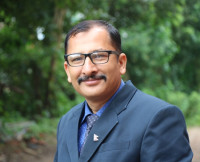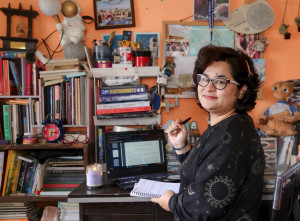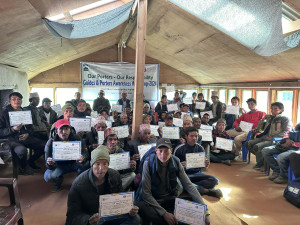Culture & Lifestyle
Tackling climate change denial
‘Dhye Dreams’ spotlights the global crisis of climate-displaced communities in the Upper Mustang of Nepal.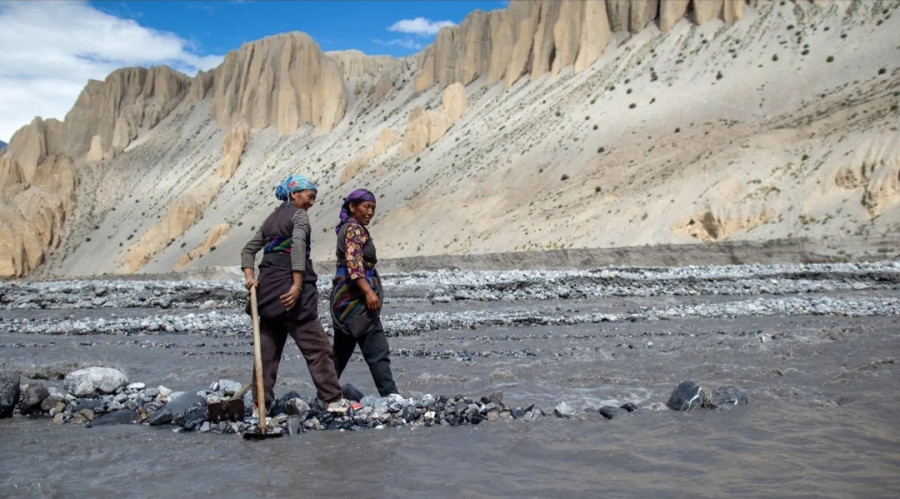
Aarati Ray
“Climate change is not real, it is a distant problem and it's not going to affect us” Sounds familiar, right? You might have heard this while talking to someone about climate change. But, it is already affecting millions of lives.
‘Dhye Dreams’, winner of the Best Short Documentary at NEUFF (Nepal European Union Film Festival) 2024, brings attention to the climate crisis which is often neglected. Directed by Shanta Nepali, this 27-minute film introduces viewers to the climate struggles faced by Dhye Village in the upper Mustang of Western Nepal.
The documentary opens with a sweeping view of the bleak, dark and beautiful landscape of Dhye Village located at 3900 m which screams pensiveness. Bleak and beautiful landscape, abandoned settlements, fading civilisation and a handful of desperate survivors set out to rebuild their lives in the new world—all feel like the perfect masala script of a post-apocalyptic movie or fiction.
Unfortunately, for the few left villagers of Dhye, who are the first recognised cases of ‘climate refugees’ in Nepal, life is grimmer than fiction; they are already living in a post-apocalyptic world of ‘climate catastrophe’.
In the documentary, audiences are introduced to the struggle and story of three resilient women fighting against their fate and surviving climate change, Kunchok Dolkar, Lhakpa Choezon and Sonam Sangmo in Dhye which have lost much of its water and people.
Dolkar, aged 55, is one of the few people left in Dhye Village. The matriarch of a big family of 13 lives alone most of the time in the village, with her husband and children visiting sometimes. Due to the water crisis, her family, like many other villagers, has moved to other areas like Chambaleh (at 3300 metres in Mustang), in search of water, food and education.
Even though life is becoming increasingly challenging, Dolkar refuses to leave Dhye. She's determined to stay connected to her roots and is unwilling to witness Dhye, once bustling with laughter and smiles, become deserted.
The scene where Dolkar’s husband, Jamyang Wangchuk, standing on the dry riverbed reminisces about the time when he and villagers would swim in a pond brimming with water brings a sense of nostalgia and loss for the audience highlighting the depleting natural sources because of climate change.
With Wangchuk’s words, “If everybody leaves in the future, all the hard work of our people to build this village will go in vain”, the audience is yet again reminded of the cruel fact that climate displacement is more than just about people migrating; it's about people leaving home, their roots, heritage and culture behind.
Climate displacement represents more than just the loss of one community—it’s the erosion of generations of culture and civilisation.
Director, Nepali has skillfully presented multiple perspectives in the documentary. In Dhye Village, while most of the remaining residents are elderly, there are also individuals like Choezon, aged 35, who has been living in Dhye since she was sixteen years old.
Choezon, busy caring for her in-laws and tending her wheat fields, walks miles to fetch water from Chambaleh. Despite her hectic days, she can't ease the anxiety of being separated from her children, who attend school far away due to their village school being closed.
Similar to Dolkar, Choezon also holds onto hope for Dhye's improvement and reuniting with her family. However, both know deep inside that, “they may never return to this place of suffering.”
Unlike many documentaries that only focus on emptying places due to the climate crisis, ‘Dhye Dreams’ provides a more comprehensive view of the reality of climate refugees and migrants. Nepali has depicted not only the residents of Dhye village but also those of the newly formed settlement in Chambaleh, giving viewers a fuller understanding of the situation.
Many people from Dhye and other climate-affected villages in Mustang, including 40-year-old Sangmo, migrated to Chambaleh due to its access to water. Starting anew, Sangmo has been living in Chambaleh for four years, where she cultivates apples and sells tea to support her children's education and sustain her livelihood.
The weather in Chambaleh is highly unpredictable, leading to a decline in apple production each year for villagers like Sangmo. Additionally, irregular heavy rainfall results in frequent floods, with nearby Kagbeni village being washed away just last year, located a mere 35 km from Sangmo’s apple orchard.
Sangmo’s line, "I go and check the river level before going to sleep every night," serves as a sombre reminder of how Chambaleh, too, is vulnerable to becoming a post-apocalyptic world and facing destruction.
Through this part, the documentary implicitly poses a pressing question to the government and world leaders, “Where will Sangmo and the villagers go when the next flood hits? How much longer will they have to migrate, and where will they go?”
Another standing point of the documentary is that it is well-researched and has truly captured the reality of the fading dreams of Dhye village. It aligns with studies showing drying water sources, unpredictable weather, and changes in vegetation, forcing the community to leave their ancestral lands. Over successive years, 23 households have resettled but this is only a temporary solution.
The documentary, filmed over six months, provides an in-depth view of the lives of climate refugees. It showcases not only their efforts in planting crops and apples but also the harvest period, offering a deeper understanding of the challenges they face due to climate change. This relatability makes the decrease in produce and farming challenges more tangible for the audience.
Despite lacking elaborate sets, dramatic dialogue, conflict, or grand music, this documentary packs a powerful punch. It resonates deeply because it stays true to reality, portraying characters genuinely grappling with the challenges of climate change.
The stunning aerial view shots of the wide landscapes, close-up shots of beautiful but heart-wrenching smiles of Dolkar, Choezon and Sangmo against the backdrop of adversity, and the melodious and stirring traditional music in the background make it a top-notch documentary.
Contrary to its title, ‘Dhye Dreams’ depicts the stories and fading dreams of climate change victims like Dolkar and Choezon, who strive to combat climate challenges and remain rooted in their homeland. It also portrays climate migrants like Sangmo, embarking on a new life elsewhere in a bid for survival. While some old dreams fade and new ones emerge, all of them are in the same fight to survive and preserve their centuries-old traditions, cultures, and identities which are slowly fading.
‘Dhye Dreams’ serves as a stark reminder and urgent alarm to dispel the notion that climate change is distant or fake. It’s a wake-up call that the post-apocalyptic scenarios depicted in fiction are already a reality for many; it is the reality of millions of people worldwide who are struggling to even meet their basic needs as a result of global threat climate change.
In a time when Nepal is currently battling climate-induced wildfires, heatwaves, pollution, and displacement, ‘Dhye Dreams’ is a must-watch for all to learn about the grave problem of climate change. Beyond a documentary, it is also an urgent reminder for government, stakeholders and leaders to deal with the climate crisis as soon as possible or else the whole world will soon turn to dystopian post-apocalyptic fiction.
Dhye Dreams
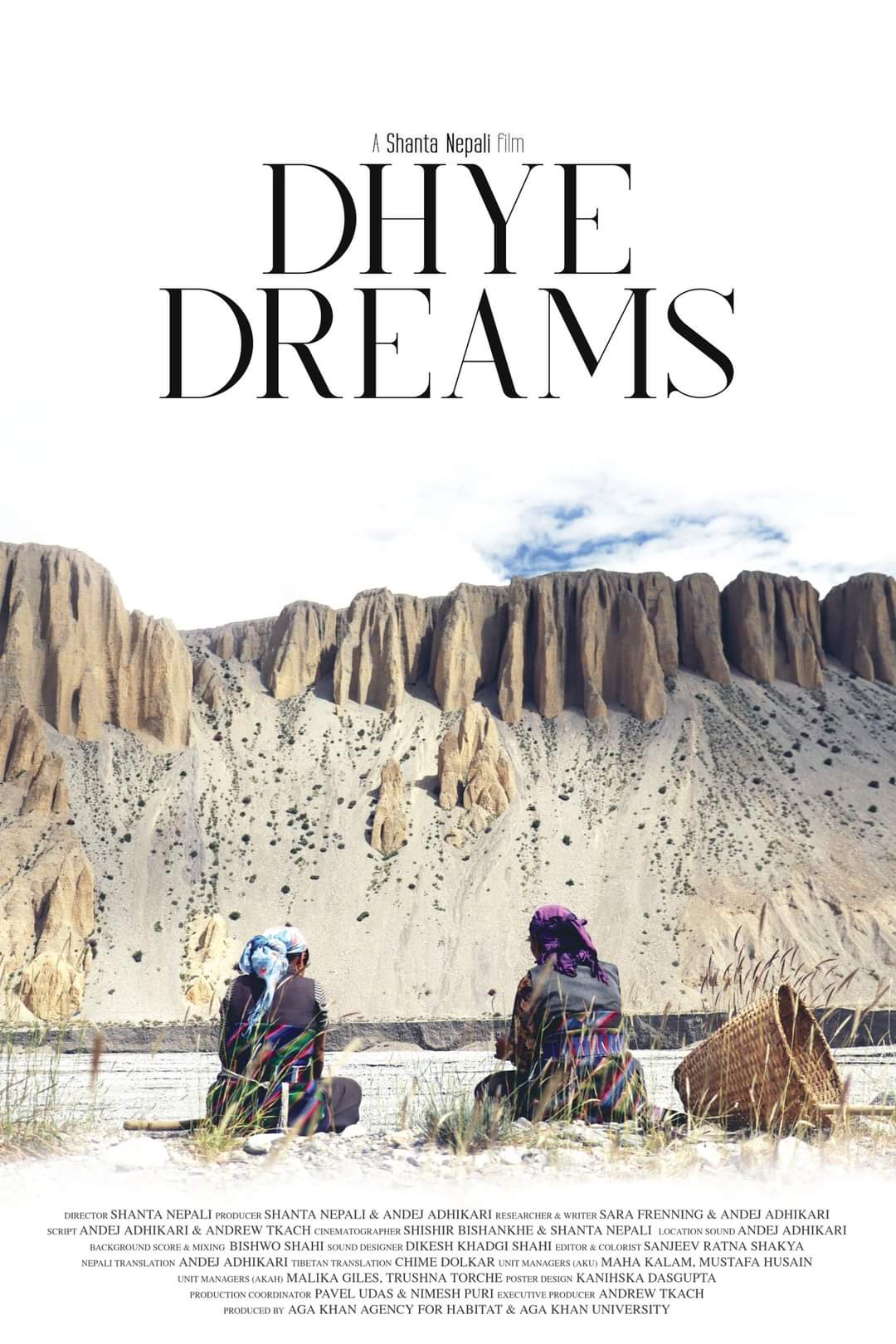
Director: Shanta Nepali
Executive Producer: Andrew Tkach
Duration: 27 minutes
Language: English




 13.12°C Kathmandu
13.12°C Kathmandu
